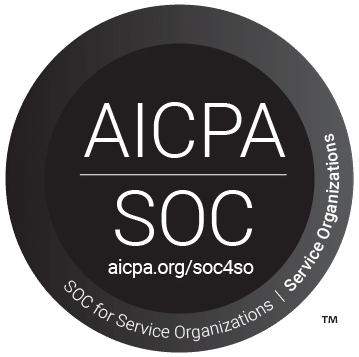
Share:
When it comes to obtaining a patent, patent drawings play a crucial role in the process, as they play an important part towards determining the success or failure of your application. Unfortunately, mistakes can often be made when preparing these drawings, leading to costly errors and rejections. You will learn about the importance of patent drawings, the most common mistakes to avoid, and how to ensure that your patent application is successful. This blog will provide you with the key tips & tricks you need to ensure that you get your patent drawings done right the first time itself.
Why are high-quality patent drawings important?
Patent drawings play a vital role in the patent application process as they are essential for illustrating an invention in a patent application. They help convey complex technical details that words alone can’t explain. This makes it easier for patent examiners to understand and assess the patent application.
Well-crafted and detailed patent drawings can demonstrate the uniqueness and inventiveness of an invention. They are also used as a reference point for product design or manufacturing, ensuring that the final product closely adheres to the invention described in the patent.
Going further, patent drawings serve as a useful tool for litigation purposes. In the event of a patent dispute, a detailed patent drawing helps demonstrate the scope of the invention and defends against potential infringement claims.
Common mistakes in patent drawings
When submitting a patent application, it’s important to check the labeling of the various parts of the drawing. Accurate labeling is crucial for patent drawings, as it facilitates understanding and identifying different invention components. Failing to provide clear labels makes it difficult for examiners and reviewers to understand the drawings which often leads to rejection of the application. To address this, it’s necessary to ensure proper labeling, appropriate references, and clear descriptions to identify and convey all aspects of the invention effectively.
Using incorrect scales is another common mistake in patent drawings. Incorrect scales distort the invention’s size and proportions, leading to misrepresentation. It is therefore necessary to adhere to specified scales and proportions to get accurate dimensions. Poor line quality, such as thin or broken lines, also compromises clarity and legibility. By using bold, solid lines consistently throughout the drawing, you ensure clear reproduction and comprehension.
Another mistake that can lead to rejection of your patent drawings is inconsistent shading or hatching. Shading or hatching techniques are often used to provide depth, texture, or differentiation in patent drawings. However, inconsistencies in shading can result in the examiner or others misunderstanding the intended meaning or features of the invention. Apply shading consistently to represent materials, surfaces, or cross-sections accurately. In addition to inconsistent shading, it is also important to avoid overcrowding your drawings with excessive details, as this often leads to misinterpretation. Patent drawings should present the key features of the invention in a clear, concise and simple manner which is easy to understand. Therefore, maintaining uniformity in shading techniques and avoiding overcrowded drawings gives you a higher chance of getting your patent drawings approved.
Furthermore, neglecting the patent office guidelines regarding the format, margins, and other technical aspects of a patent drawing is a significant mistake. Each office has specific rules for drawings. Not following these rules results in the drawings being rejected or considered non-compliant. Hence, it should be rather mandatory to review and adhere to guidelines meticulously to avoid unnecessary delays or rejections. Additionally, ensure uniformity across all drawings, including style, size, formatting, and presentation. Consistency enhances comprehension and professionalism.
Solutions to common patent drawing mistakes
Do It Yourself: To ensure a higher chance of getting your patent drawings approved the first time itself, it’s crucial to double-check your drawings for accuracy before submitting them with your patent application and making sure your drawings doesn’t have any mistakes mentioned above. A careful and detailed review of your drawings can help you catch any errors or inconsistencies that could cause issues down the line.
Get Expert Help: Many a times its recommended that you work with a professional patent illustrator who has extensive experience creating drawings that meet the requirements of the patent office where you are applying. You must communicate clearly with your illustrator to ensure that they understand your invention and how it works. This will help them create drawings that accurately depict your invention and all its components. A skilled illustrator understands the specific rules and guidelines for patent drawings and can help you avoid common mistakes.
Reviewing Patent Drawings
Reviewing patent drawings is a crucial aspect of the patent examination process. Through careful analysis of these visual representations, patent examiners and professionals can gain valuable insights into the features, functionality, and technical aspects of an invention. A comprehensive understanding of patent drawings helps ensure accurate and effective evaluation of patent applications.
PatSeer’s smart drawing capabilities make it easy for you to review patent drawings by displaying the details over various parts mentioned in the drawing. A tooltip over the part label number shows you the part name and gives you a text snippet from the specification where the part has been described. This helps to avoid going back and forth between the drawing and the description when evaluating the patent, thus simplifying the process of reviewing your patent drawing.
Conclusion
In conclusion, patent drawings are more than often as critical as your patent claims. They provide a visual representation of the invention and when rightly done they can speed up your patent prosecution time. However, many common mistakes can be made when preparing patent drawings and correcting them in advance can help save a lot of time (and money too).
It is therefore important to thoroughly research and understand the rules and regulations of the relevant patent office and work with experienced patent drawing professionals.




